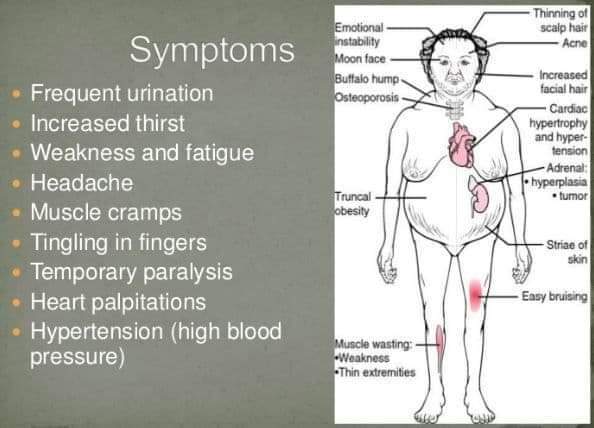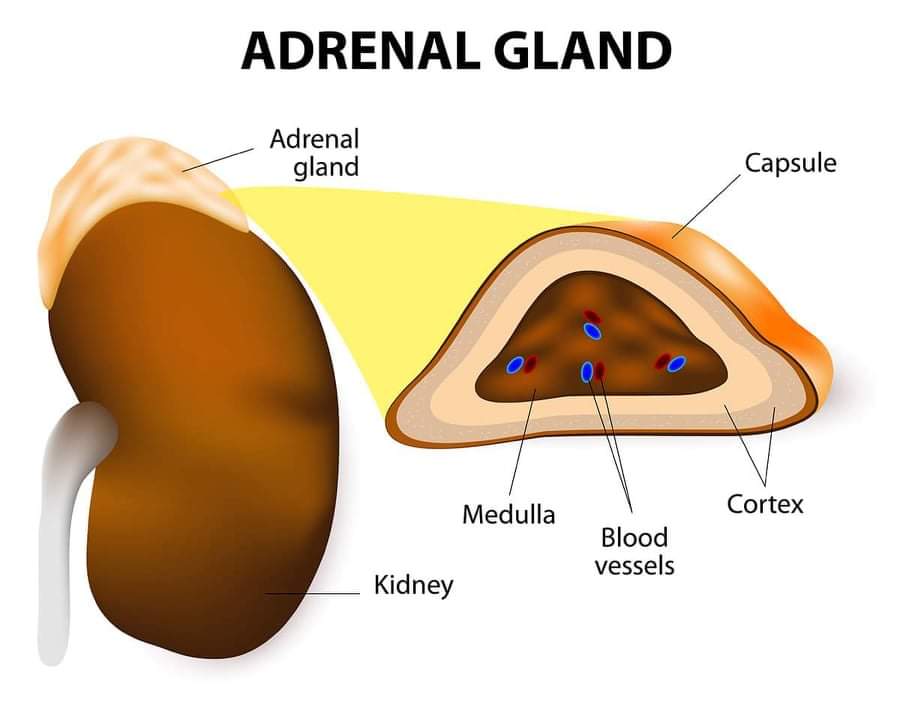★ Introduction to Adrenal Gland:
– It is a life-saving gland and also known as an essential endocrine gland.
(Death occurs within 3 days to 15 days of absence of adrenocortical hormone, whereas absence of adrenomedullary hormone drastically decreases the resistance to mental and physical stress)
★ Adrenal gland is divided into:
• Adrenal medulla and
• Adrenal Cortex
★ The Cortex is further divided into:
▪︎ Outer Zona Glomerulosa – Secretes Mineralocorticoids (Aldosterone)
▪︎Middle Zona Fasciculata – Secretes Glucocorticoids (Cortisol)
▪︎ Inner Zona Reticularis – Secretes Sex Hormones (Testosterone, Estrogen and Progesterone)
★ Why are mineralocorticoids are known as life saving hormones?
✓Aldosterone is a life-saving hormone because it serves to retain sodium and water to maintain a sufficient blood volume for circulation. So, it maintains the osmolarity and volume of extra-cellular fluid (ECF).
In absence of aldosterone, upto 20 g of Na+ will be lost per day (hypernatreuria) which will result in imbalance of ECF osmolarity and volume.
★ Functions of Aldosterone :
• Reabsorption of sodium from renal tubule.
• Excretion of potassium through renal tubule
• Secretion of hydrogen into renal tubule
★ What happens when aldosterone secretion increases?
✓ Hyperaldosteronism which can either be primary or secondary.
★ Primary Hyperaldosteronism:
- Primary aldosteronism is also known as Conn’s Syndrome. It usually results from tumor of zona glomerulosa of the cortex.
Surprisingly edema doesn’t occur in primary aldosteronism due to aldosterone escape phenomenon.
★ Clinical Features:

• Increase ECF volume and blood volume.
• Hypertension as a result of increased blood volume.
• Hypokalemia due to excessive loss of urinary K+ loss.
• Renal damage leading to polydypsia and polyuria.
• Nephrogenic diabetes insipidus.
• Muscular weakness
• Metabolic alkalosis (due to loss of H+ ions)
• Tetany (due to metabolic alkalosis related decreased blood calcium)
Treatment:
• Excision of tumour
Aldosterone Escape:
It refers to the escape of kidney from the “salt retaining effects” of aldosterone even in the excess administration or secretion of aldosterone.
★ Mechanism:
⬆️ Aldosterone levels result in,
⬆️ECF and Hypertension
This aldosterone induced high blood pressure, decreases the ECF volume in two ways:
• It stimulates the secretion of atrial natriuretic peptide (ANP) from atrial muscle , which causes excretion of Na+ inspite of excess aldosterone.
• Due to pressure diuresis, excretion of excess salt and water due to high blood pressure occurs.
Result in decreased salt and water in ECF
This prevents edema in primary aldosteronism.
Sushmita Chowdhury
USTC
2015-16
Platform Acadmia/ Fahima Hasan

